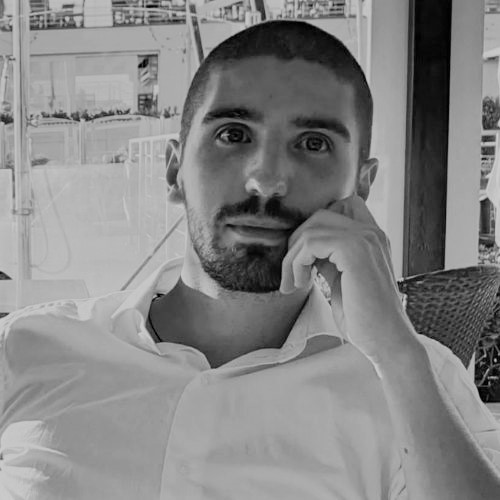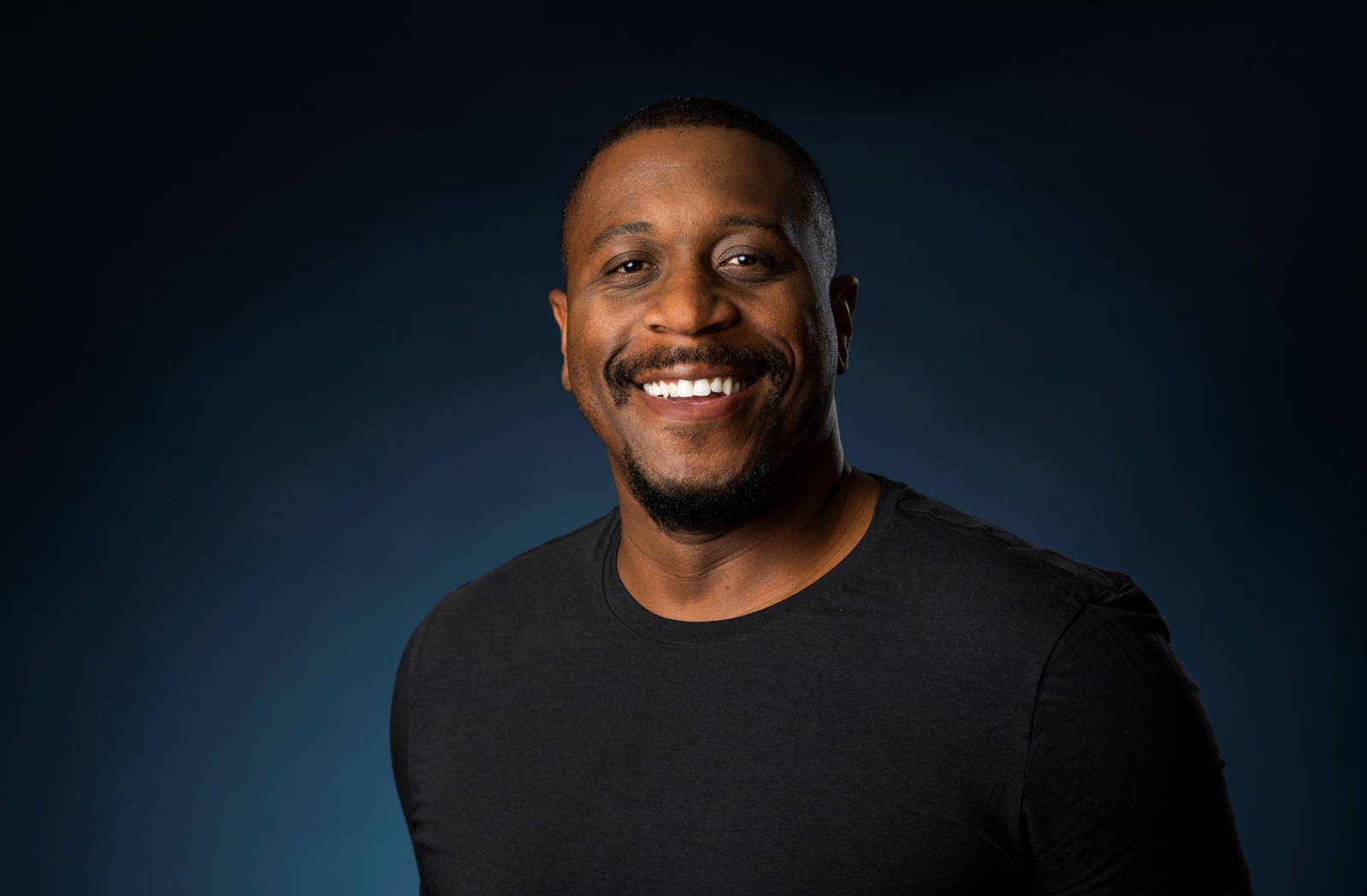At Circularity 24, the leading circular economy conference in the United States, one of the central themes was collaboration as a tool for promoting sustainability and innovation. Among the speakers was Garry Cooper, recognised as one of Chicago's leading figures in the circular economy. We took the opportunity to interview him to gain insights into his vision for the circular economy and Chicago’s potential future as a technology hub.
In addition to his work as a neuroscientist, Cooper is the founder of Rheaply, an exchange platform that enables companies to visualise, quantify, and optimise the use of their materials and resources, thereby facilitating their reuse and promoting circular procurement. Cooper also serves on the board of P33 Chicago, an initiative dedicated to fostering technological growth in the city with the ambitious goal of positioning Chicago on par with Silicon Valley.
Cooper, you are considered among the pioneers of the circular economy in Chicago, yet you started your career as a neuroscientist. How did Rheaply first come about?
As a neuroscientist, my goal was exclusively to find a cure for Parkinson's, which was unrelated to sustainability. However, in my laboratory, we had a lot of equipment and materials that were not being utilized. These items would end up being stored in refrigerators and freezers, out of sight and forgotten. Meanwhile, within the same institution and sometimes even on the same floor, there were other laboratories with students like myself who were purchasing the very items we had in storage, simply because they were unaware we had them, and we didn't know they needed them. Initially, I attempted to solve this problem manually, but then I came up with the idea for Rheaply to address it on a larger, more digital scale. We began by assisting companies in Chicago to develop systems for internal reuse. The question was: can we find a way to reuse what we already have within our company?
Is choosing reuse also economically advantageous?
We have documented several success stories on our website. For instance, the University of Illinois at Chicago achieved half a million dollars in savings through our platform within the first 72 hours.
Going back to Rheaply, how has the offering evolved over time?
After focusing on laboratories, we started working on furniture and other types of equipment, such as information technology items. This is how we started Rheaply in November 2016. As the company evolved over the following years, we realised that eventually, everything a company acquires will, at some point, no longer be needed. Thus, we began setting up internal reuse networks within organisations to extend the lifecycle of assets. By connecting different departments within a company through our platform, we facilitated the sharing of resources among them. This approach allowed us to expand our business by promoting internal asset sharing. About two years ago, we took it a step further by asking, "What about those who aren't on our platform? What about the wider community in a city or the community at large?" We wanted to find ways for assets that couldn't be fully utilised internally or between businesses to benefit others. This led us to expand our platform to include schools, non-profits, and small businesses, enabling them to access and make use of these assets as well.
Additionally, we provide regional marketplaces that are available free of charge, thanks to sponsorships. For instance, Google has sponsored four or five of these marketplaces in locations such as New York, the Bay Area, and Chicago. Visa has also sponsored a platform in Washington DC, among others. On these platforms, businesses can access items at no cost, courtesy of sponsorships from companies like Visa or Google, or even from the cities themselves. They can obtain items from our corporate customers who are willing to share them for free or sell them at a nominal price. This fosters a kind of circular market economy within communities.
Shipping: Yes or No?
We aim to minimise the distance that items travel, by restricting it within a 100-mile radius. This approach ensures that the business case remains robust and environmentally sustainable. Cities are ground zero for climate change; and despite covering only 3% of the Earth's surface, they generate 50% of all waste. Therefore, by facilitating resource sharing in these densely populated areas, we can make a significant impact.
Regarding Chicago, what has been the city's relationship with the circular economy in recent years?
Over the last five years, there has been a notable increase in Chicago companies adopting a circular business model. Chicago, being the birthplace of modern architecture, has a rich history of innovation. Many large companies headquartered here, traditionally involved in manufacturing, are now embracing circularity. They are not solely focusing on product design but are also rethinking their entire business models to generate greater profits by producing fewer items, which is truly remarkable. Moreover, several startups in Chicago are offering innovative solutions to assist these companies in expanding their circular practices.
What should be improved?
What is lacking, especially in the public sector, are two critical elements. Firstly, we need root policies. For instance, policies on extended producer responsibility and waste management. Chicago faces significant waste challenges. If you look at construction and demolition (C&D) debris or even sand and glass waste, these materials make up about 25% of our solid waste stream. I don't know if we are doing anything about it. Other cities like San Antonio or San Francisco have been implementing solutions. They have introduced incentives, not just regulations, to tackle these issues. Incentives such as tax breaks or expedited permits for construction projects that incorporate reuse and circularity can drive positive change. The second part of the problem is that I would like the city, county, and state to be more proactive in becoming customers for startups and businesses focused on sustainability. When the government becomes a customer, it achieves two primary goals: firstly, it provides crucial revenue to these companies, allowing them to develop more products and services for the commercial market. Secondly, when the government acts as a customer, it helps advance the entire supply chain.
In addition to being the CEO of Rheaply, you serve on the board of P33, an initiative that brings together leaders from Chicago's technology and business sectors, both public and private. What is the purpose of P33?
The goal is to make Chicago a top-tier technology centre by 2033, comparable to Silicon Valley or New York in terms of technological innovation. To do this we need to focus on building the future, not just replicating what has been done in the past. We must ask ourselves: what are the emerging technologies in which Chicago wants to be a leader?
And what areas have you identified?
Organisations like P33, also by discussing it with the state governor, have identified three key areas. The first is quantum research, which we call "beyond silicon." It is about going beyond traditional silicon chips and embracing the future of technology, such as qubits. The second area is "beyond biology," focusing on synthetic biology. The third is "beyond carbon," which is about innovations in sustainable technologies. In addition to these areas, we have a comprehensive strategy for new talent development, which we need to cultivate and encourage to contribute to our technology ecosystem and advance these industries.
Why should Chicago have an advantage?
We already have many of the essential resources. For instance, within a 50-mile radius of Chicago, there are three Department of Energy quantum research hubs, a significant concentration considering there are only eight such hubs nationwide. Leveraging these existing resources can help us become a major technology hub. Furthermore, over 40% of all federal funding for quantum research is allocated to Chicago. With 27 contracts already secured, projections indicate that over the next decade, there will be around 30,000 jobs directly related to quantum technologies and an additional 50,000 supporting roles in Chicago. This is expected to lead to the creation of around 200 new companies and generate over 60 billion dollars in potential economic output.
What is the collaborative idea behind the project?
Institutions such as Northwestern, the University of Chicago, the University of Illinois, and the University of Wisconsin are collaborating with the private sector, creating a unique environment where universities and industry cooperate. This collaboration fosters innovation and allows these entities to pool their resources and expertise. This synergy has resulted in the creation of an exchange platform that facilitates these partnerships, enhancing our ability to compete more effectively on a global scale. Through this exchange, we can enter the market with a united front, fostering a spirit of pre-competitive collaboration. This means that instead of working in isolated silos or prematurely competing, these institutions and companies collaborate to drive innovation and market entry. This collaborative approach not only strengthens our competitive edge but also accelerates the development and commercialisation of new technologies.
During this interview, we went from discussing the circular economy to quantum computing. Is there a connection between the two?
We are embarking on the incredibly complex task of building quantum computers, which essentially mimic the fundamental principles of the universe. If we can achieve that, it should theoretically be easier to build an economy based on the principles of nature, a circular economy. The underlying principles are the same and we have the resources necessary to create a circular economy. The challenge lies in our ability to unite, collaborate, and effectively harness these resources, much like our efforts in Chicago to develop quantum computers.
This article is also available in Italian / Questo articolo è disponibile anche in italiano
Cover image: Garry Cooper © Rheaply



